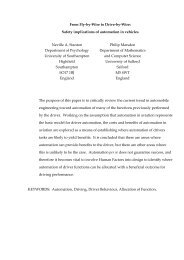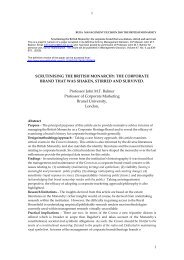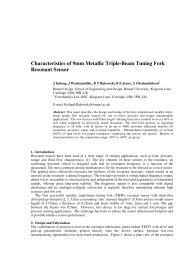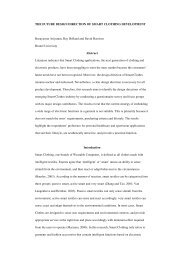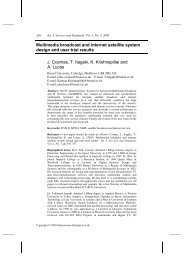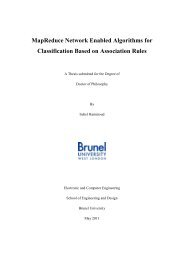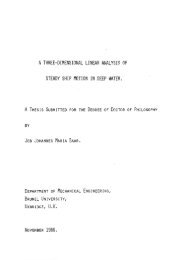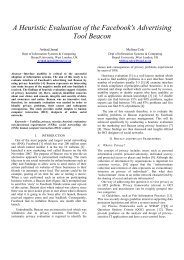Chapter 1 - Brunel University
Chapter 1 - Brunel University
Chapter 1 - Brunel University
You also want an ePaper? Increase the reach of your titles
YUMPU automatically turns print PDFs into web optimized ePapers that Google loves.
<strong>Chapter</strong> 2: Literature Review<br />
Service Online<br />
Stage 3: Transform<br />
the Enterprise<br />
Stage 4: Next<br />
Generation<br />
Government<br />
Implementing basic services that are installed and adding an<br />
e-government presence to existing services.<br />
Increasing emphasis is upon the automation of back office<br />
processes and integration both within and between services.<br />
It emphasizes future generation government, where most<br />
business processes are re-engineered and IS/IT systems are<br />
collaborated through organisation. This stage implies total<br />
transformation of government.<br />
5 Stage Model<br />
Table 2.10:<br />
5- Stage Models For E-government Implementation<br />
Perception Reference<br />
Stage 1: Emerging Creating a government website with limited information. UN, (2001).<br />
Stage 2: Enhanced Updating information regularly.<br />
Stage 3: Interactive Provides users with reasonable levels of interaction enabling<br />
them to download forms and paying parking tickets.<br />
Stage 4:<br />
Transactional<br />
Enables users to complete online transactions, e.g. obtaining<br />
visas, licences, passports.<br />
Stage 5: Seamless or<br />
Fully Integrated<br />
Provides services across administrative and departmental<br />
lines with the highest level of integration.<br />
Stage 1: Simple Representing a basic form of e-government uses e.g. Hiller and<br />
Information Age disseminating information by posting it on the web sites. Bélanger,<br />
Stage 2: Request and<br />
Response<br />
Facilitation of citizen and government interaction.<br />
(2001).<br />
Stage 3: Service and<br />
Financial<br />
Transactions occur both between governments and<br />
individuals (e.g. obtaining visa), and between governments<br />
and businesses (i.e. ordering office facilities).<br />
Stage 4: Integration This is similar to the last two stages in the Layne and Lee<br />
(2001) four-stage model. This stage refers to integrating<br />
separate systems at different levels (vertical) and from<br />
Stage 5: Political different departments (horizontal).<br />
Participation<br />
Promotion of political participation through services such as<br />
online voting and surveys.<br />
Table 2.11:<br />
6- Stage Model For E-government Implementation<br />
6 Stage Model Perception Reference<br />
Stage 1: Information<br />
Publish/Dissemination<br />
Stage 2: Official Twoway<br />
Transaction<br />
Stage 3: Multi-purpose<br />
Portals<br />
Stage 4: Portal<br />
Personalization<br />
Stage 5: Clustering of<br />
Common Services<br />
Stage 6: Full<br />
Integration/Enterprise<br />
Transaction<br />
Governments provide users with increased access to<br />
information.<br />
Agencies provide interaction between governments and users<br />
by using ICT such as digital signatures and security keys.<br />
Governments utilise a single portal to provide universal<br />
service across multiple departments.<br />
Governments enable users to customise portals according to<br />
their own desires.<br />
Governments enhance collaboration and reduce intermediaries<br />
(between operational processes) in order to provide a unified<br />
and seamless service.<br />
An ideal vision in which governments provide sophisticated,<br />
unified and personalised services to every customer according<br />
to their own needs and preferences.<br />
Deloitte<br />
and<br />
Touche,<br />
(2001).<br />
In summarising the aforementioned e-government implementation stage models, the<br />
author accentuates that there is no mutual conformity among the different scholars<br />
Shafi Al-Shafi 31



